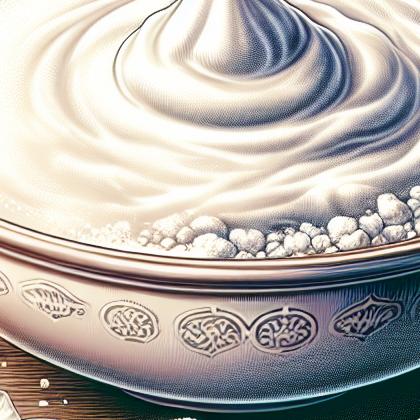Powdered Yogurt

Yogurt, yoghurt, or yoghourt (/ˈjoʊɡərt/ or /ˈjɒɡərt/; from Turkish: yoğurt; other spellings listed below) is a fermented milk product produced by bacterial fermentation of milk. The bacteria used to make yogurt are known as "yogurt cultures". Fermentation of lactose by these bacteria produces lactic acid, which acts on milk protein to give yogurt its texture and its characteristic tang.Worldwide, cow's milk, the protein of which mainly comprises casein, is most commonly used to make yogurt, but milk from water buffalo, goats, ewes, mares, camels, and yaks is also used in various parts of the world.Dairy yogurt is produced using a culture of Lactobacillus delbrueckii subsp. bulgaricus and Streptococcus thermophilus bacteria. In addition, other lactobacilli and bifidobacteria are also sometimes added during or after culturing yogurt. Some countries require yogurt to contain a certain amount of colony-forming units of microorganisms.In Western culture, the milk is first heated to about 80 °C (176 °F) to kill any undesirable bacteria[citation needed] and to denature the milk proteins so that they set together rather than form curds. In some places, such as parts of India, curds are a desired component and milk is not pasteurized but boiled. The milk is then cooled to about 45 °C (112 °F).[citation needed] The bacterial culture is added, and the temperature is maintained for 4 to 7 hours to allow fermentation.
Powdered yogurt Pairs With:

Powdered yogurt Properties:
| Food Property | Type | Description |
|---|---|---|
| Flavor Profile | Sour | Powdered yogurt has a tangy and sour taste due to the fermentation process. |
| Texture | Dryness | Powdered yogurt has a dry and powdery texture before being mixed with liquid. |
| Nutritional Value | Macronutrients | Powdered yogurt is a good source of protein, calcium, and probiotics. |
| Micronutrients | Powdered yogurt may contain additional vitamins and minerals depending on the brand and ingredients. | |
| Fiber | Powdered yogurt may contain some fiber, particularly if it includes added prebiotics. | |
| Aroma | Fermentation | Powdered yogurt has a characteristic fermentation smell due to the live bacteria cultures used in the production process. |
| Chemical Composition | Acidity/Alkalinity (pH) | Powdered yogurt has a slightly acidic pH due to the fermentation process. |
| Cooking Behavior | Water Retention | When mixed with water, powdered yogurt can absorb liquid and swell to create a creamy texture. |
Food Pairing App - Version 1.2.0
